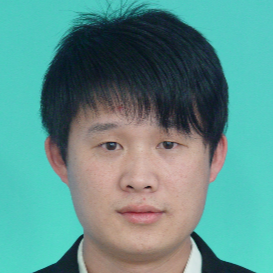International Journal of Intelligent Systems and Applications (IJISA)
IJISA Vol. 9, No. 3, 8 Mar. 2017
Cover page and Table of Contents: PDF (size: 902KB)
Research of Self-Tuning PID for PMSM Vector Control based on Improved KMTOA
Full Text (PDF, 902KB), PP.60-67
Views: 0 Downloads: 0
Author(s)
Index Terms
Permanent Magnet Synchronous Motor (PMSM), vector control, kinetic-molecular theory optimization algorithm (KMTOA), Chaotic Kinetic Molecular Theory Optimization Algorithm (CKMTOA), chaos theory, self-tuning PID
Abstract
The Permanent Magnet Synchronous Motor has been applying widely due to it’s high efficiency, high reliability, relatively low cost and low moment of inertia. However, the PMSM drives are easily affected by the uncertain factors such as the variation of motor parameters and load disturbance. In order to realize the control of the PMSM accurately, a novel adaptive chaotic kinetic molecular theory optimization algorithm was implemented for seeking the best parameters of PID controller. In the PMSM vector control system, the speed loop will be adjusted by a CKMTOA PID controller. In modified kinetic molecular theory optimization algorithm, the adaptive inertia weight factors are used to accelerate the convergence speed, and chaotic searching is conducted within the neighbor set of the solutions to avoid the local minima. The model of PMSM and its` space vector control system are set up in the software of MATLAB/Simulink. The effectiveness of the self-tuning CKMTOA PID controller is verified by comparing with the conventional PID and particle swarm optimization algorithm. The extensive simulations and analysis also show the effectiveness of the proposed approach.
Cite This Paper
Lingzhi Yi, Chengdong Zhang, Genping Wang, "Research of Self-Tuning PID for PMSM Vector Control based on Improved KMTOA", International Journal of Intelligent Systems and Applications (IJISA), Vol.9, No.3, pp.60-67, 2017. DOI:10.5815/ijisa.2017.03.08
Reference
[1]Vikas Kumar, Prerna Gaur, A.P. Mittal. “ANN based self tuned PID like adaptive controller design for high performance PMSM position control [J],” Expert Systems with Applications, 2014, 41(17), pp.7995-8002.
[2]Dongbin Lu, Minggao Ouyang, Jing Gu, Jianqiu Li, “Optimal braking energy feedback control of permanent magnet synchronous motor for electric vehicle [J],” Journal of Chinese Electrical Engineering Science, 2013, 33(03), pp.83-91.
[3]Aishwarya A Apte, Vrunda A Joshi, Rahee A Walambe, Ashwini A Godbole, “Speed Control of PMSM Using Disturbance Observer,” 2016 4th IFAC Conference on Advances in Control and Optimization of Dynamical Systems ACODS, 2016, 49(1), pp.308-313.
[4]Jiarui Cui, Qing Li, Bo Zhang, Guangyi Liu, “Variable universe adaptive fuzzy PID control of permanent magnet synchronous motor [J],” Journal of Chinese Electrical Engineering Science, 2013,S1, pp.190-194.
[5]Qiang Song, Chao Jia, “Robust Speed Controller Design for Permanent Magnet Synchronous Motor Drives Based on Sliding Mode Control,” Applied Energy Symposium and Summit 2015: Low carbon cities and urban energy systems, Energy Procedia 88, 2016.06, pp. 867 – 873.
[6]W. Zheng, X. Wang and Y. Pi, "Study of the fractional order proportional integral controller for PMSM based on differential evolution algorithm," 2015 IEEE Advanced Information Technology, Electronic and Automation Control Conference, Chongqing, 2015, pp. 201-205.
[7]R. Senthil Rama1 • P. Latha2, "An Effective Torque Ripple Reduction for Permanent Magnet Synchronous Motor Using Ant Colony Optimization [J]," International Journal of Fuzzy Systems, 2015,17(4), pp. 577-854.
[8]A. A. M. Yusuf, N. J. Agung and S. Unang, "Implementation real value genetic algorithm to determine three PID parameter," Control, Electronics, Renewable Energy and Communications, 2015 International Conference on, Bandung, 2015, pp. 198-202.
[9]Xi Xiao, Qingsong Xu, Yating Wang, Yuchao Shi, "Parameter identification method of embedded permanent magnet synchronous motor based on genetic algorithm [J], " Tran-sactions of China Electrotechnical Society, 2014,29(03), pp. 21-26.
[10]W. Tong-xu and M. Hong-yan, "The research of PMSM RBF neural network PID parameters self-tuning in elevator," The 27th Chinese Control and Decision Conference, Qingdao, 2015, pp. 3350-3354.
[11]Y. Zhou, W. Shang, M. Liu, X. Li and Y. Zeng, "Simulation of PMSM vector control based on a self-tuning fuzzy PI controller," 8th International Conference on Biomedical Engineering and Informatics, Shenyang, 2015, pp. 609-613.
[12]S. Cao, J. Tu and H. Liu, "PSO algorithm-based robust design of PID controller for PMSM," 6th International Conference on Natural Computation, Yantai, Shandong, 2010, pp. 3513-3517.
[13]Nihat Ozturk, Emre Celik, "Speed control of permanent magnet synchronous motors using fuzzy controller based on genetic algorithms [J], " International Journal of Electrical Power & Energy Systems, 2012,43(01), pp.889-898.
[14]Zhao Kaiqi, "The study of improved PI method for PMSM vector control system based On SVPWM," Industry Applications Society Annual Meeting (IAS), 2011 IEEE, Orlando, FL, 2011, pp. 1-4.
[15]C.D. Fan, H.L Ouyang, Y. J Zhang, et al. "Optimization algorithm based on kinetic-molecular theory [J]," Journal of Central South University, 2013, 20(12), pp. 3504-3512.
[16]Yuying Li, Qiaoyan Wen, Lixiang Li. "Modified chaotic ant swarm to function optimization [J], " The Journal of Ch-ina Universities of Posts and Telecommunications, 2009, 16(1), pp. 58–63.


